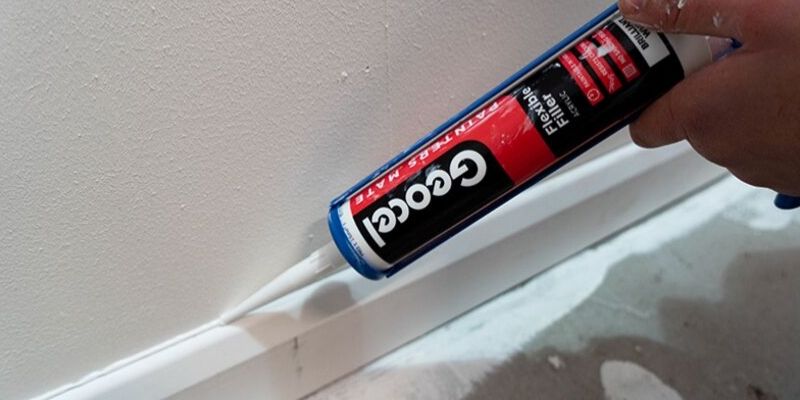What is decorators caulk?

When it comes to getting a professional finish during decorating caulk has a big part to play. This article explains what caulk is and some of the common issues that you can experience when applying caulk.
So let's look at what caulk is. Put simply, decorators caulk is a flexible filler that can be used to seal gaps around windows, doors, across the top edge of skirting boards and to cover cracks and fill gaps in ceiling coving prior to painting and is an essential item in any professional decorators bag. Decorators use caulk over something like silicone sealant for sealant skirting edges as is it can be painted, although it is a filler it cannot be used to fill holes in walls as it cannot be rubbed down.
There are a number of brands that produce decorators caulk, all of which state different selling points. One of the biggest selling points for decorators is how soon after the caulk is applied can it be painted. Various caulks like the Soudal Decorators Caulk are paintable in as little as an hour after it is applied. Another key selling point is the caulks resistance to cracking, as this can be a real problem with some caulks. If the caulk cracks then you won't get a nice clean professional finish and the surface will need fixing before painting.
How to apply decorators caulk
The best way to apply caulk is by using a cartridge applicator, running a smooth bead along the edge of the surface you are filling a small amount at a time. Remember you can always add more but it is difficult to remove once applied. Once the caulk is applied simple run a wet finger gently along the caulk to create a smooth surface.
Don't forget, decorators caulk can't really be sanded so you want the smoothest finish possible before it dries as you will not be able to fix this easily after it has dried. If you are using the caulk to fill a crack in plaster or coving then us a small amount at a time and smooth the surface with a caulking blade, do this before it dries to create a smooth, flat surface.

Caulk applicator
Common issues with caulk
Crazing
One of the main problems with caulk is when you come to paint it with emulsion. Sometimes when painting over caulk with emulsion can cause the paint to crack as it dries. So why does emulsion paint craze over caulk? There are a number of reasons paint may craze over caulk, paint manufacturer Sherwin-Williams have outlined some of the reasons this may happen in this article. If this happens you will need to paint over it with an oil-based undercoat and then paint back over it with the emulsion.
Cracking
As mentioned briefly above some caulks are prone to cracking. This causes an issue as if this happens it is time-consuming to fix. Cracking occurs when the caulk is not flexible enough to deal with the movement of the surfaces it is filling. All houses and buildings are constantly moving and if the caulk is too stiff it will crack as the building shifts, ruining your high-quality finish.
Top tips for using caulk
- Use a good quality caulk
- Prepare the surface fully, removing all dust and dirt.
- Apply a small amount at a time, you can always as more
- Take your time when applying and smoothing the caulk
- Use a sealer, primer or undercoat before painting with emulsion, especially matt emulsions.
Conclusion
In summary, caulk is an absolute essential for any professional or DIY decorator and there is a huge range of caulks on the market. The key is to use a good quality caulk and not rush the preparation or application.
Which caulk are you using?


